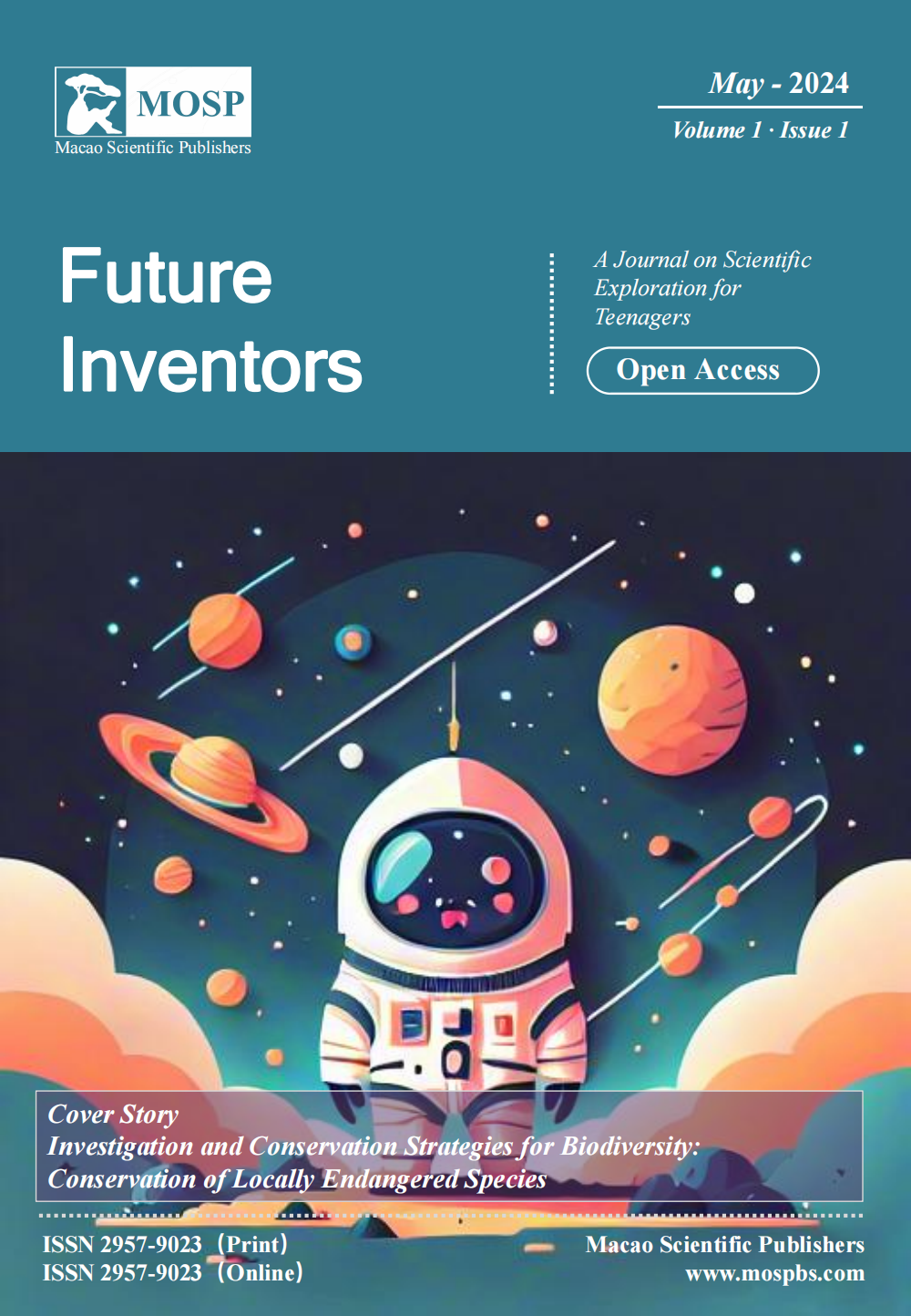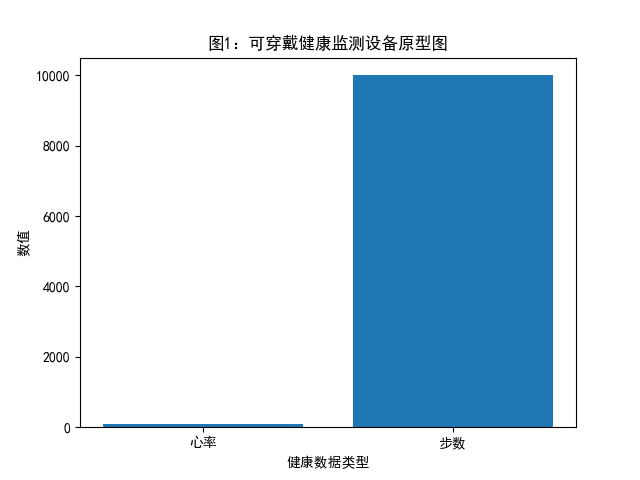
Abstract:
This paper designs a wearable health monitoring device suitable for their living and learning needs, aiming to monitor and improve the health level of students. The device combines health monitoring, movement tracking and daily life assistance functions, and provides users with comprehensive health management services through intelligent data processing and analysis. In design, the device is made of light and soft material, which is easy to wear and ergonomic, effectively improving user comfort and wearable experience. In terms of functions, in addition to the basic health monitoring functions, social interaction and learning assistant features are also added to improve user engagement and practicality. This paper introduces the overall architecture and hardware design scheme of the device, analyzes the implementation logic and user interface design of the software system in detail, and finally gives some preliminary results of the user experience test. Through continuous optimization and improvement, we believe that this health assistant device can effectively enhance students' health awareness and quality of life, and provide effective support and help for their learning and growth.
Keywords: wearable health monitoring equipment, students, health assistant, health management, data monitoring, health habits, health awareness, quality of life
1 Foreword
1.1 Research Background
Wearable health monitoring devices is an emerging field developing rapidly in recent years. With the improvement of people's health awareness, more and more people begin to pay attention to their health status. This device can monitor the user's physiological indicators such as heart rate, steps, sleep quality in real time, providing users with data support for health management.
It is particularly important to design a health assistant that is suitable for them. Students usually have an irregular schedule, a high load of study pressure, and a lack of exercise habits, which will have a certain impact on their health. Through wearable health monitoring devices, students can more conveniently monitor and manage their health status, timely adjust their lifestyle, and improve their health awareness and quality of life.
At present, although there are various brands of wearable health monitoring devices on the market, most of them are designed for adults. For students, the applicability and convenience still need to be improved. Therefore, designing a health assistant customized for students has important practical significance and development potential, which can help them develop good health habits and improve their study and quality of life [1].
1.2 Research Significance
|
data type |
Monitoring indicators |
|
Daily activity volume |
Steps, calorie consumption |
|
sleep quality |
Sleep duration and sleep depth |
|
Heart rate change |
Trend of heart rate change |
|
blood pressure |
Changes in blood pressure |
Table 1: Student health data collection Form
The wearable health monitoring device studied in this paper aims to design and develop a health assistant [2] suitable for students. The student population is an important research subject because their health status is directly related to academic performance and quality of life. The health assistant will be able to monitor students' daily activities, sleep quality, heart rate changes, and blood pressure to help them better manage their health. By using this device, students can have a clearer picture of their health status and take measures accordingly when needed. By collecting and analyzing students' health data, we can provide more targeted health education for schools to help students develop good health habits. Through this study, we hope to provide students with a convenient and practical health assistant to promote their health and learning development.
2 Design and Development of Wearable Health Monitoring Devices
2.1 Design Concept
The design concept of this wearable health monitoring device is to provide a convenient and intelligent health assistant [3] based on the characteristics and needs of students. We are committed to helping students' monitoring of science and technology health in real time and providing personalized health management advice to improve their quality of life and learning efficiency.
Considering the unique needs of students in study and life, this device is mainly designed for the following aspects: First, the monitoring of health data, including real-time monitoring of heart rate, sleep quality, exercise amount and other indicators, to help students understand their own physical conditions and make corresponding adjustments. The second is to provide health advice and customized health plans, providing students with scientific health management programs according to their actual situation.
In terms of usage scenarios, we considered the needs of students in different contexts. For example, in class, this device can remind students to get up and move regularly and maintain a good posture, monitor exercise effects and provide exercise advice during exercise, and intelligently monitor sleep quality to help students improve their sleep habits. We hope that this wearable health monitoring device can become a right-hand man for students' health management, helping them grow and learn [4] better.
2.2 Technical Solutions
Wearable health monitoring devices have a wide application prospect in the student population. In order to design and develop a health assistant suitable for students, we need to consider not only basic health monitoring functions, but also portability and user-friendly. In this technical solution, we will combine sensing technology, data processing algorithm and user interface design to develop a comprehensive wearable health monitoring device, [5]. By monitoring students' healthy data, such as heart rate, body temperature, and exercise data, to help them maintain a healthy lifestyle.
3 Functional Requirements Analysis of The Health Assistant
3.1 Health Data Monitoring
Users' demand for health data monitoring function includes data monitoring of body temperature, heart rate, sleep quality, exercise steps and other aspects. Therefore, designing a suitable health assistant for students requires a variety of monitoring functions. The device can monitor the user's physiological data in real time through sensors, such as heart rate sensors, temperature sensors, acceleration sensors, and transmit the data to the APP or cloud for analysis and storage.
To enable users to understand their health status, devices need to be able to present data to users in an intuitive and understandable way. A simple and clear interface can be designed on the device to display the user's health data trend chart, health advice and other information. At the same time, the device can also remind users to rest, exercise or drink water through the vibration reminder function, to help students maintain healthy living habits.
To design a health assistant suitable for students, in addition to meeting the basic health data monitoring needs, it also needs data analysis and presentation functions to help students to better understand and manage their own health status. Such health assistants will become the right-hand men for students to live a healthy life and improve their quality of life and learning efficiency.
3.2 Health Reminder Function
Users' demand for health reminder function mainly includes regular reminder of drinking water, regular reminder activities, regular reminder of rest, etc. For the student group, long periods of study and addiction to electronic devices may lead to bad living habits, such as neglect of water, lack of exercise and rest. Therefore, health monitoring devices can help users develop good living habits by setting the function of timing reminders.
The device can analyze the user's activity data and sleep quality data through intelligent algorithms to provide personalized health reminders. For example, according to the user's learning time and amount of exercise, the equipment can reasonably arrange to remind the user of proper rest and activities, to avoid eye fatigue and cervical spine problems caused by staring at books or computers for a long time.
Through continuous health reminders, users can better attention to their health, gradually develop good habits and improve their lifestyle. Such a health assistant suitable for students can not only monitor users' health data, but also promote users to adopt positive health behaviors by reminding them to improve the quality of life.
4 System Implementation and Performance Evaluation
4.1 System Prototype Design
Based on the analysis of the health needs of students, we designed a prototype system of wearable health monitoring devices. The system mainly includes health data monitoring, exercise and fitness records, health reminders and suggestions, social interaction and other functions. By wearing devices, users can monitor heart rate, sleep status, steps and other health data in real time, and view personal health reports and trend statistics on the App.
To achieve these functional requirements, we have adopted multi-sensor technology and intelligent algorithms to ensure the accuracy and reliability of the data. At the same time, the system also provides personalized health plans and dietary advice to help users improve their lifestyles and stay healthy.
In terms of interface design and interaction process, we focus on user experience and adopt a simple and clear design style, so that users can view and manage their health data easily and quickly. Through intuitive chart display and friendly operation interface, users can easily obtain health information and improve their awareness of their own health and management ability.
4.2 Analysis of Experimental Methods and Results
To evaluate the performance of wearable health monitoring devices, we designed a series of experiments to test their accuracy, stability, and utility. We first conducted basic functional tests of the device, including heart rate monitoring, sleep monitoring, and exercise monitoring. The results show that the device is stable with high accuracy in different situations, and can meet the basic health monitoring needs of users.
Then, we conducted a comparative experiment with traditional health monitoring devices, and the results showed that wearable health monitoring devices have obvious advantages in terms of comfort, convenience and sustainability, which are more suitable for the use needs of students. Through long-term tracking experiments, it is found that the device can effectively help users to establish a healthy living rule, improve their physical quality, and have a certain ability to prevent diseases.
In general, wearable health monitoring devices fully consider the needs of users in the design and development of users, and provide a full range of health monitoring functions, with high stability and accuracy. However, we also found that the device still has some deficiencies in data transfer and storage and need further optimization. In the future, we will continue to improve device performance and explore more health service functions to achieve greater potential and development of wearable health monitoring devices.
5 Future Development Direction
5.1 Suggestions for Sustainable Development

Figure 1: Prograph of wearable health monitoring device
To design a student-friendly health assistant, we first developed a prototype of a wearable health monitoring device. The device uses lightweight materials that can be comfortably worn on the wrist. Various built-in sensors can monitor the user's heart rate, steps, sleep quality and other health data in real time. Users can view the data by connecting to a mobile app, understanding their health status and developing a health plan accordingly. The equipment is also waterproof and dust-proof, and is not affected by daily activities such as exercise or bathing. Through this wearable health monitoring device, students can more conveniently manage their own health and promote the sustainable healthy development of [7].
5.2 Prospective for Technical Improvement
The future development direction of wearable health monitoring devices is becoming more and more intelligent and personalized. With the development of artificial intelligence and big data technology, wearable devices can not only simply monitor health data, but also provide corresponding health suggestions and management solutions according to the personalized needs of users. Future wearable devices may include more sensors, such as blood glucose monitoring and sleep quality monitoring, to fully monitor users' health indicators, [8].
The direction of new technologies may also include monitoring the user's emotional and psychological state. We can understand the emotional state of the user by analyzing their physiological data and behavioral patterns, so as to provide corresponding mental health advice. Wearable devices can also combine virtual reality technology to provide users with an immersive health management experience, such as instructing users to conduct fitness training [9] through virtual fitness coaches.
6 Conclusions
It is very important and meaningful to design a healthy assistant suitable for the students. Due to the irregular work and rest time, high load of learning pressure and lack of exercise habits, students can affect their health to a certain extent. Through wearable health monitoring devices, students can more easily monitor and manage their health status, adjust their timely, and improve health awareness and quality of life. At present, the wearable health monitoring devices on the market are mainly designed for adults, and their applicability and convenience for students need to be improved. Therefore, it has important practical significance and development potential to design a health assistant specially customized for students, which can help them develop good health habits and improve their study and quality of life [10]. In the future, the development direction of wearable health monitoring devices will tend to be intelligent and personalized, combined with artificial intelligence and big data technology, to provide more comprehensive health management services. Through continuous optimization of device performance and function improvement, wearable health monitoring devices will become the right-hand man of students' health management and promote their health and learning development.
Funding
This research received no external funding.
Author Contributions
All authors have read and agreed to the published version of the manuscript.
The authors declared that they have no known competing financial interests or personal relationships that could have appeared to influence the work reported in this paper.
References
